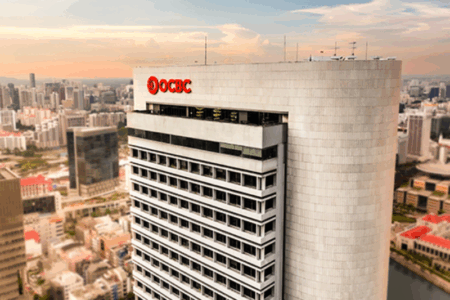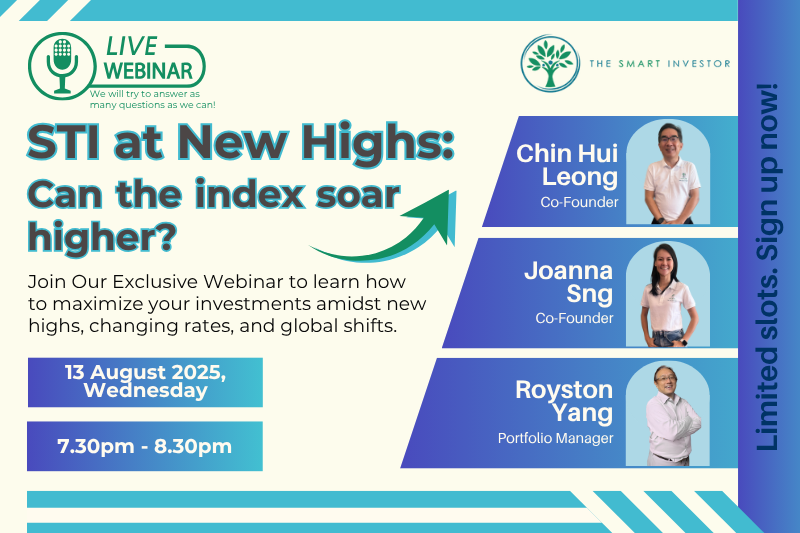US President Trump’s tariffs have weighed on the stock market, driving the NASDAQ Composite Index into a bear market in early April.
At its lowest, the index was down by over 24 per cent from its peak.
As stocks fell, two major US banks, JP Morgan (NYSE: JPM) and Goldman Sachs (NYSE: GS), raised the odds of a recession.
For a moment, the situation looked bleak.
Then came the big U-turn: Trump paused his threat of higher tariffs for 90 days.
Stocks surged in response.
As of last Friday (9 May), the NASDAQ has risen by over 17 per cent from its low.
Curiously, as share prices rose, news of a potential recession quietened down, seemingly indicating that the risk is off the table.
However, this is not the time to be complacent.
How often do bear markets occur?
Bear markets, or when an index falls by 20 per cent or more from its peak, are not common, but not rare either. According to wealth manager Ben Carlson, the NASDAQ experiences a bear market once every four years.
But if such market declines are not rare, then why are investors shocked when they occur?
It’s like clockwork.
Whenever the drumbeat of falling stock prices intensifies, fear creeps in, and concerns over what will happen next lead to mass panic selling.
The answer may lie in the way our brain works.
Author and Wall Street Journal columnist Jason Zweig wrote in his book Your Money and Your Brain:
“… when it comes to investing, our incorrigible search for patterns leads us to assume that order exists where it often doesn’t.”
How does this tendency play out in bear markets?
For instance, seeing the NASDAQ fall for three days in a row could prompt your brain to recognise this sequence as danger.
If left unchecked, this trigger can turn into the fear of further losses.
And when fear overwhelms you, it could cause you to sell your shares in panic.
Here’s the rub: this is not the scariest part.
Zweig also said that this behaviour is unavoidable:
“It’s vital to recognise the basic realities of pattern recognition in your investing brain:
a) It leaps to conclusions
b) It is unconscious
c) It is automatic
d) It is uncontrollable”
Said another way, the moment you look at stock prices, your brain is already working to recognise patterns even when there are none.
This process happens without your prompting.
Here’s what you don’t want to miss: this tendency applies both in falling markets and rising markets.
When stock prices start to rise, as they have since early April, your pattern-recognising brain is put at ease as your stocks recover their losses.
The risks, which were prominent while stocks were falling, seemingly fade to the back of your mind.
In reality, your emotions are being tugged both ways by the drumbeat of the stock market.
What drives stocks up and down?
As the stock market recovers, it’s exciting to see your wealth increase, but it’s exactly at this moment that it is critical to maintain your investing discipline.
In particular, it may be premature to assume that the risk of a recession has disappeared.
More importantly, the business impact of Trump’s tariffs has yet to be factored into today’s stock price.
How do we know that?
Let me explain.
Consider the enclosed equation, which shows that a stock price can be broken down into two key components, namely free cash flow (FCF) per share and the price-to-FCF (P/FCF) ratio.
The FCF per share represents the business, while the P/FCF represents the market’s sentiment.
So, what happens when a stock goes down?
This simple equation tells you that a share price decline can either be driven by a lower FCF per share or a decrease in the stock’s P/FCF ratio.
Similarly, a stock price increase is either driven by a higher FCF per share or an increase in the P/FCF.
The real business impact has yet to come
So, how do we know that the business impact has yet to kick in?
For starters, Trump’s Liberation Day was announced on 2 April 2025, after the end of the first quarter.
Therefore, the business performance you see, represented by the trailing FCF per share, does not include the impact of Trump’s tariffs.
Take Abbott Laboratories (NYSE: ABT).
The healthcare company expects to be hit with a tariff bill worth “a few hundred million dollars”, but only in the second half of this year.
Likewise, digital advertising giants Alphabet (NASDAQ: GOOGL) and Meta Platforms (NASDAQ: META) both posted healthy double-digit gains in revenue for their first quarter.
Yet, despite their size, both companies are not immune to Trump’s policy changes.
Both Meta and Alphabet cited the removal of the de minimis tariff exemption on US goods as a potential headwind to ad spending in Asia.
Elsewhere, gene sequencing firm Illumina (NASDAQ: ILMN) has been banned from exporting its instruments to China as part of the Middle Kingdom’s retaliation against US tariffs.
The examples above tell you two things: one, the business impact from Trump’s tariffs has yet to be factored into share prices, and two, there is more than one way that a company can be impacted by Trump’s stance.
Get Smart: Focusing on what you can control
In light of this uncertainty, investors must first accept that they will not be able to predict what happens next. This mindset sets the stage for how you respond to the current challenges.
The key is to focus on what you can control.
For starters, you will need to discern, to the best of your ability, whether Trump’s tariffs will have a temporary impact or cause permanent damage to the business.
While short-term headwinds can hurt, it’s the durability of the FCF growth over the long term which will do the heavy lifting for a stock.
In the case of Meta, the 145 per cent gain in its FCF per share since the end of 2020 is responsible for the share price more than doubling over the same period.
Another key tool at your disposal is your investment pace.
Too often, investors agonise over the right price to pay for a stock.
However, in this volatile environment, figuring out what may happen to the business next could prove to be futile. Instead, you may be better off accepting what you don’t know and focus, instead, on moderating the pace of your investments.
There could still be negative surprises down the road.
Under these circumstances, diversifying the number of stocks you own and diversifying over time, by moderating your investment pace, both contribute towards managing risk.
Above all, tune out the drumbeat of stock prices.
When markets are rising, we don’t want to get carried away, just like when markets are falling, we don’t want to lose heart and sell.
Keeping an even heel is harder than it looks.
Then again, focusing on the business amid a turbulent market is the best chance you have of outperforming the market.
Good luck.
Many investors think DeepSeek lowering AI costs means less revenue for tech companies. But that’s not the full story, and believing it could cost you. In our latest free report, we unpack a surprising insight from a top tech CEO who explains why lower AI costs may actually drive more tech spending, not less — and he’s got the numbers to prove it. If you’ve misunderstood this trend, you could miss out on some of the biggest investment opportunities. Click here now to access “How GenAI is Reshaping the Stock Market” today to get the full breakdown.
Follow us on Facebook and Telegram for the latest investing news and analyses!
An earlier version of this article appeared in The Business Times.
Disclosure: Chin Hui Leong owns shares of Abbott, Alphabet, Illumina and Meta Platforms.





